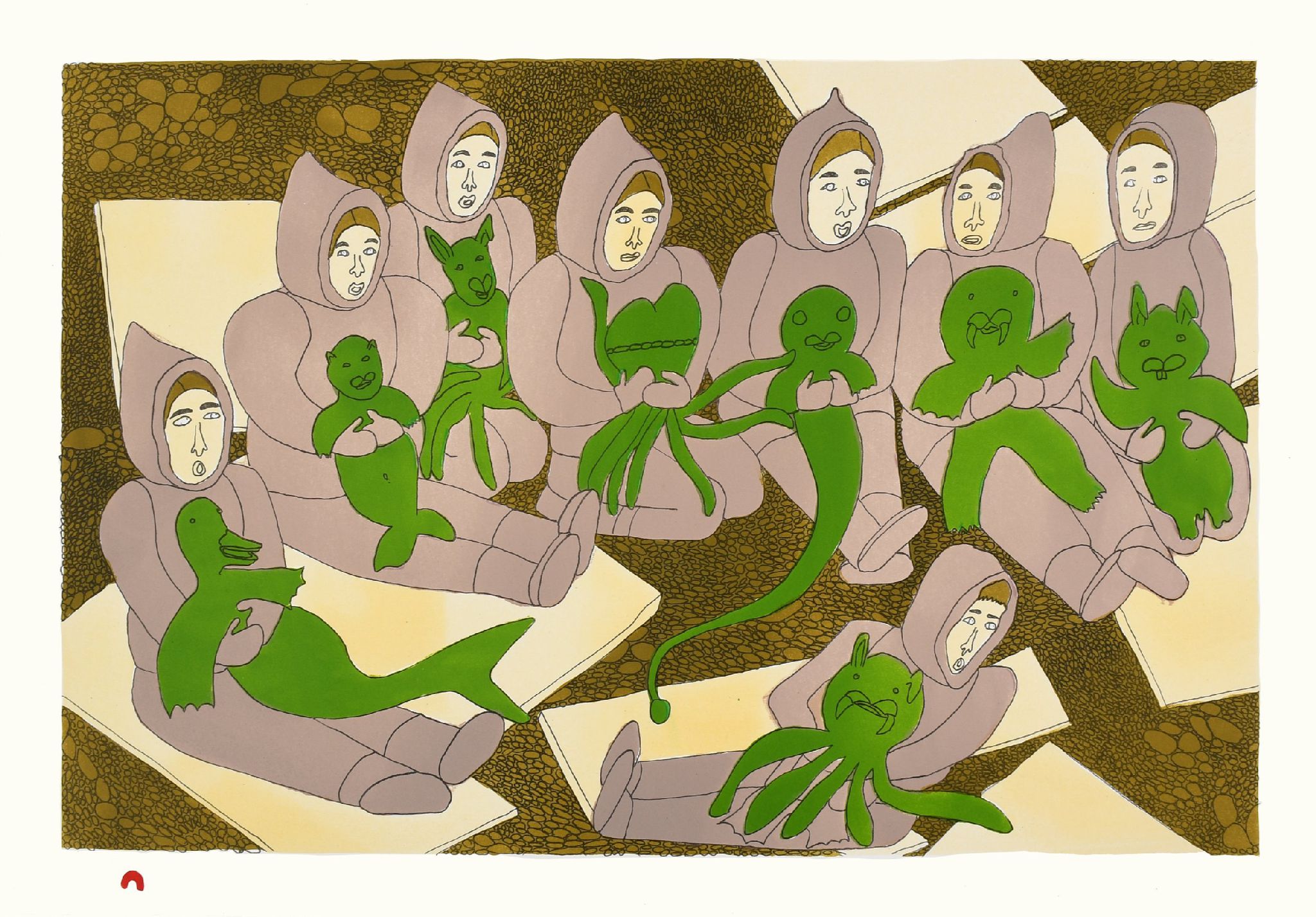
CARING FOR CREATURES, Shuvinai Ashoona, Cape Dorset 2022, Lithograph, 17 3/4 x 25 1/2 in.
The Inuit parka holds great cultural and historical significance. Made from animal hides and fur, or a combination of both, the parka is a coat expertly designed to keep the wearer warm in the extreme cold weather of the Arctic. While its design has evolved over time, the parka is more than just a piece of clothing; it is a symbol of Inuit identity, survival, and innovation.
Evidence of fur and skin garments in circumpolar communities date back thousands of years. [1] The earliest parkas were made from caribou and seal hides, sewn together using sinew or animal gut. These parkas were designed to be lightweight yet warm, and were often decorated with intricate patterns or designs.
Parkas almost always have a distinctive hood that can be tightened to protect the face from the biting wind and snow. Women wear a particular type of parka called an amauti with a compartment on the back, below the hood, which allows mothers to carry young children close to their bodies for the first two to three years of their lives. [2]
The style of parka would vary between communities. For example, the Kivallirmiut (also known as Caribou Inuit), who began trading with the Hudson’s Bay Company in 1718, [3] favoured caribou skin that was harvested in the summer, therefore lightweight and very strong. [4] Once materials like cotton and wool were traded with Europeans, new types of parkas were created which were better suited to the wetter, milder climate of the southern Arctic. Parkas were later adorned with intricate beadwork and metals, such as spoons and copper pennies, and coloured materials. [5]
Over time, the parka has evolved to suit the changing needs of contemporary Inuit life. More recently, the parka has gained popularity in mainstream fashion, with many artists and designers incorporating its distinctive design elements into their work. An example of this can be seen in the work of Sanikiluaq-based seamstress Eileena Arragutainaq who collaborated on a collection of parkas for Canada Goose’s Project Atigi along with thirteen other seamstresses in 2019. [6] Arragutainaq learned to sew at a young age from her mother and sister. The influence of the Inuit Parka can be seen in fashion brands such as Eddie Bauer, The North Face, Banana Republic, and others.
Today, the parka remains an important part of Inuit culture functioning not only as a useful garment, but a symbol of cultural identity, continuity, and resilience.
To view available artworks featuring the parka, click here.
Sources:
[1] Betty Kobayashi Issenman, Sinews of Survival: The Living Legacy of Inuit Clothing, p. 11.
[2] Ibid, p. 44.
[3] https://www.historymuseum.ca/cmc/exhibitions/tresors/treasure/262eng.html
[4] Kobayashi Issenman, Sinews of Survival: The Living Legacy of Inuit Clothing, p. 136.
[5] Ibid, 148-9.
[6] https://www.inuitartfoundation.org/profiles/artist/Eileena-Arragutainaq
